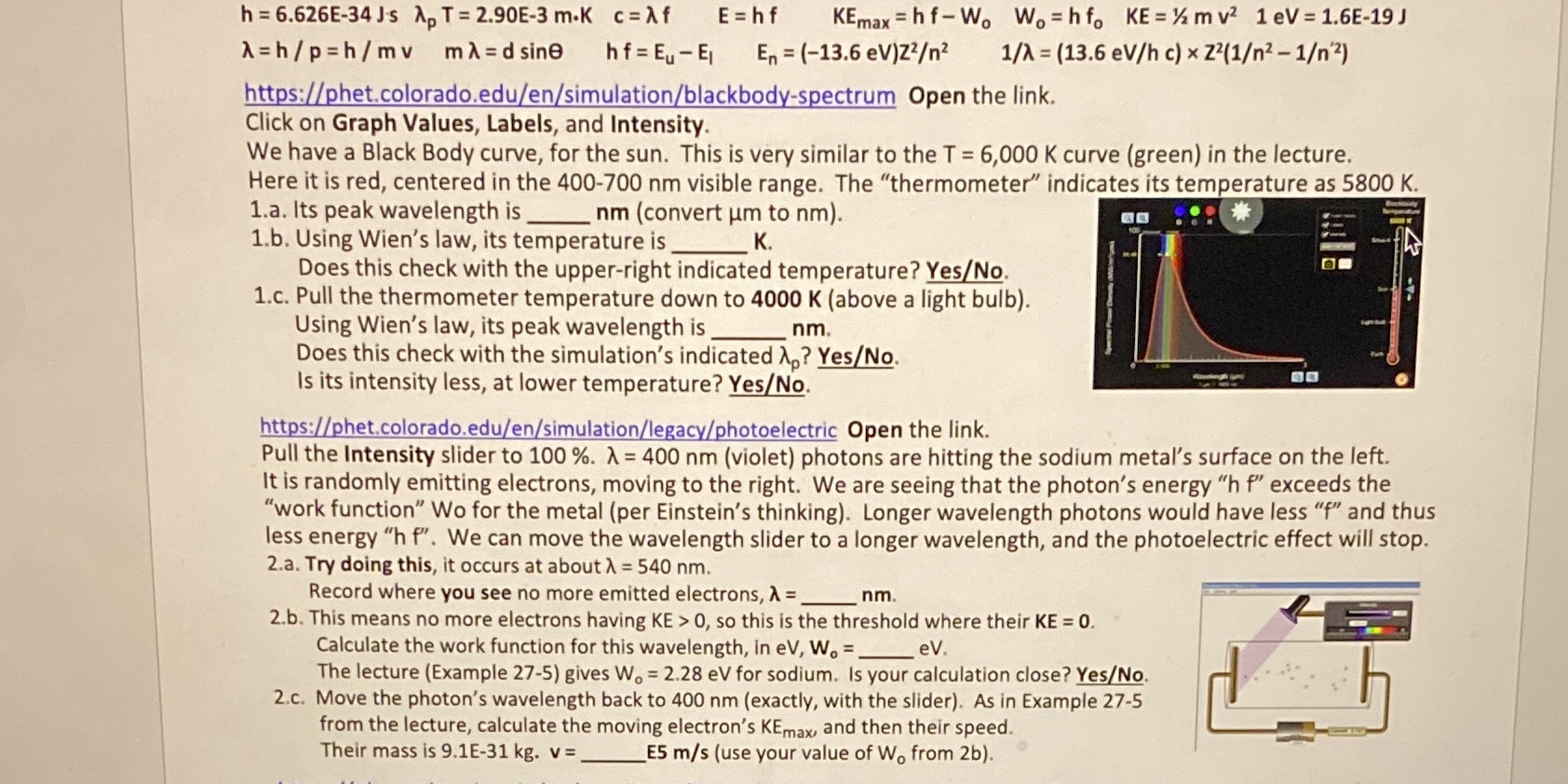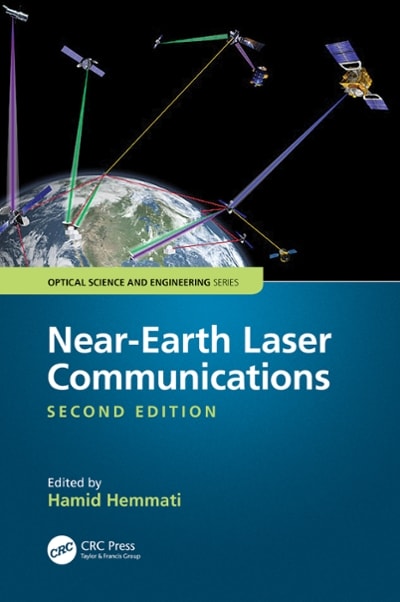Answered step by step
Verified Expert Solution
Question
1 Approved Answer
Part 1 Reference: https://phet.colorado.edu/en/simulation/blackbody-spectrumPart 2 Reference: https://phet.colorado.edu/en/simulation/legacy/photoelectric h = 6.626E-34 J's Ap T= 2.90E-3 m.K c=Af E=hf KEmax = hf-Wo Wo= hfo KE = 1/am
Part 1 Reference: https://phet.colorado.edu/en/simulation/blackbody-spectrumPart 2 Reference: https://phet.colorado.edu/en/simulation/legacy/photoelectric

Step by Step Solution
There are 3 Steps involved in it
Step: 1

Get Instant Access to Expert-Tailored Solutions
See step-by-step solutions with expert insights and AI powered tools for academic success
Step: 2

Step: 3

Ace Your Homework with AI
Get the answers you need in no time with our AI-driven, step-by-step assistance
Get Started


